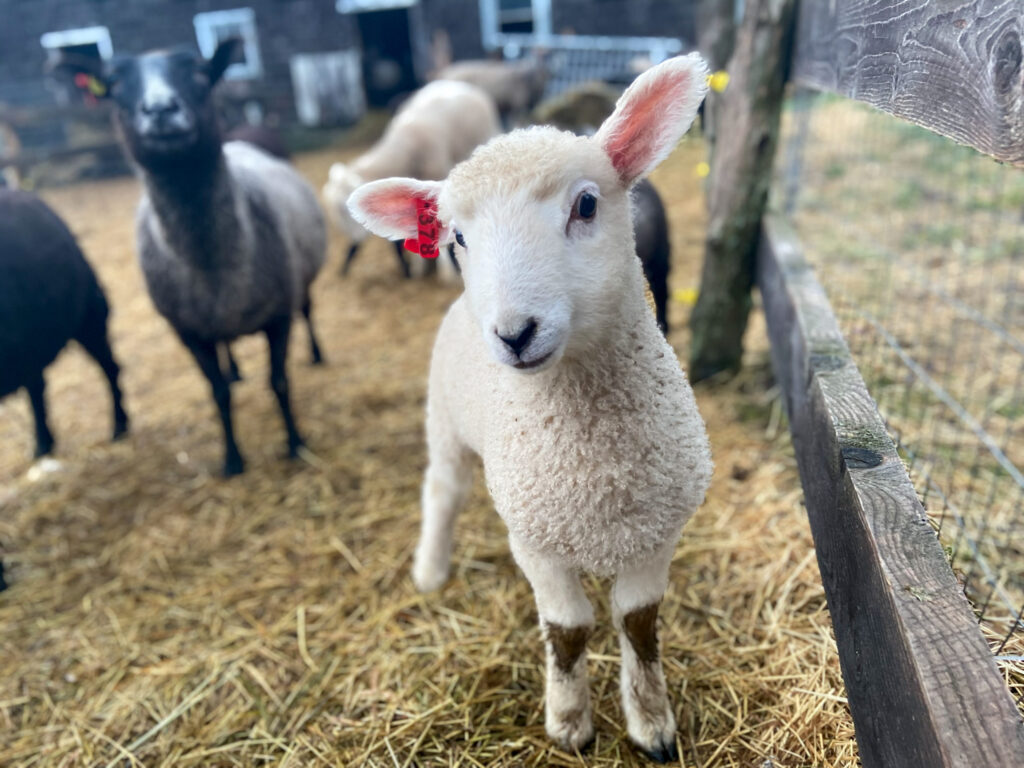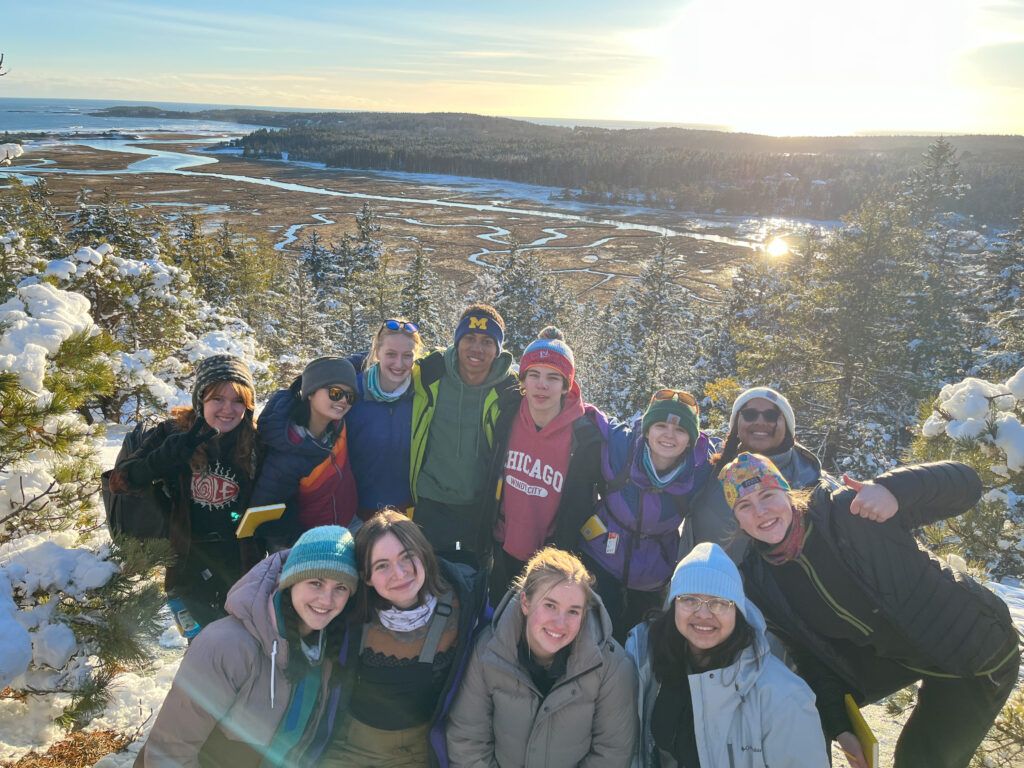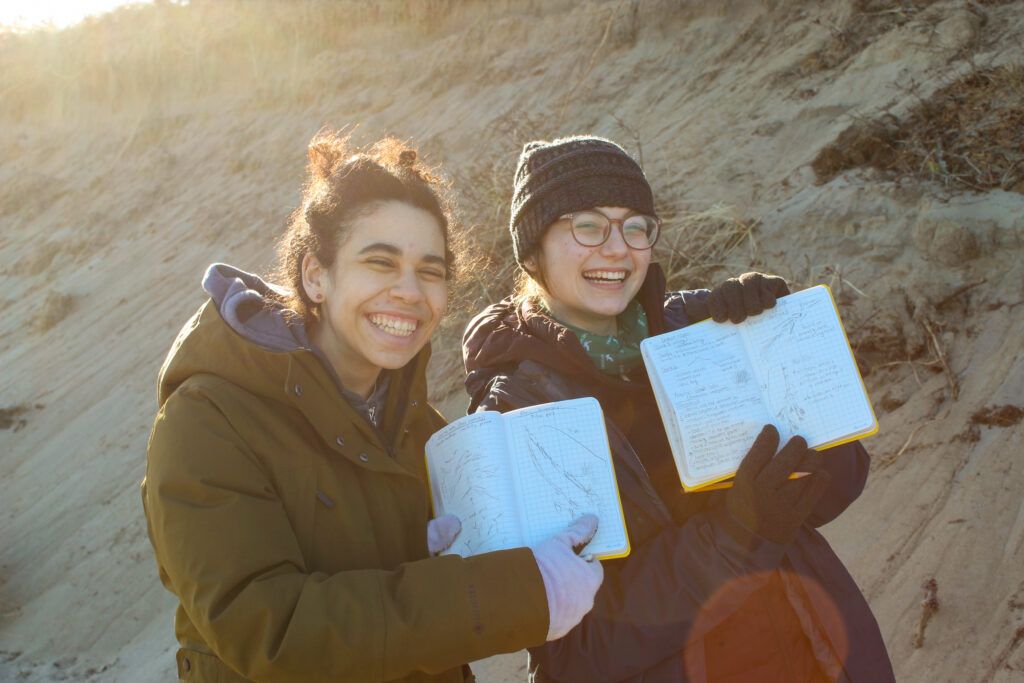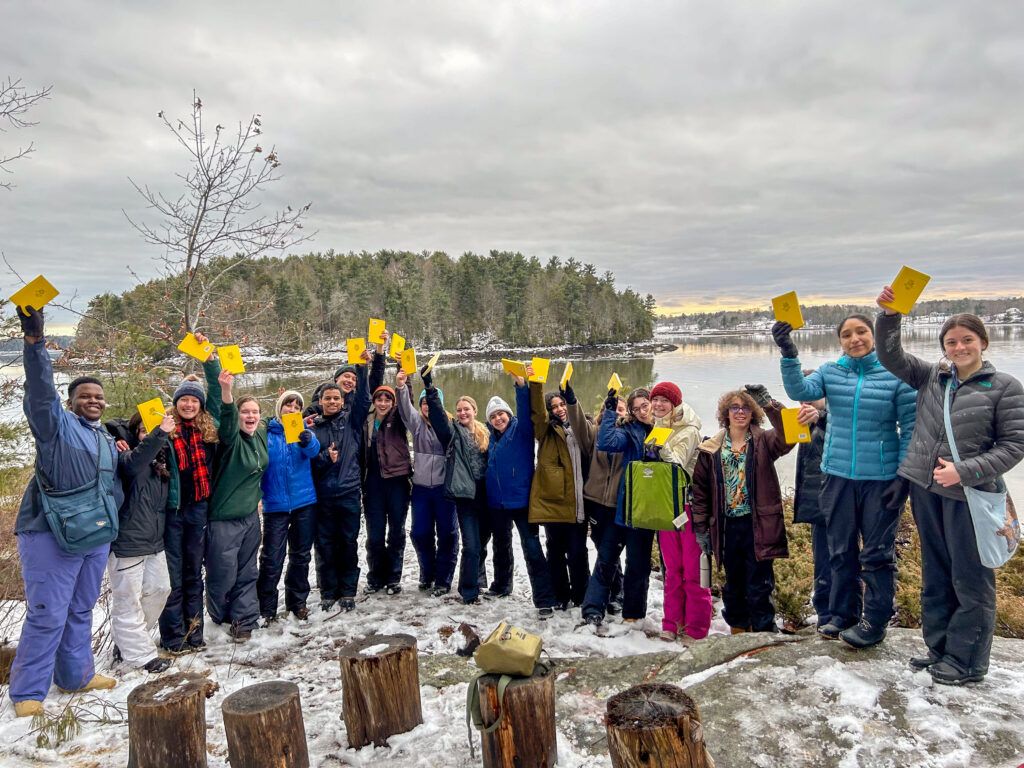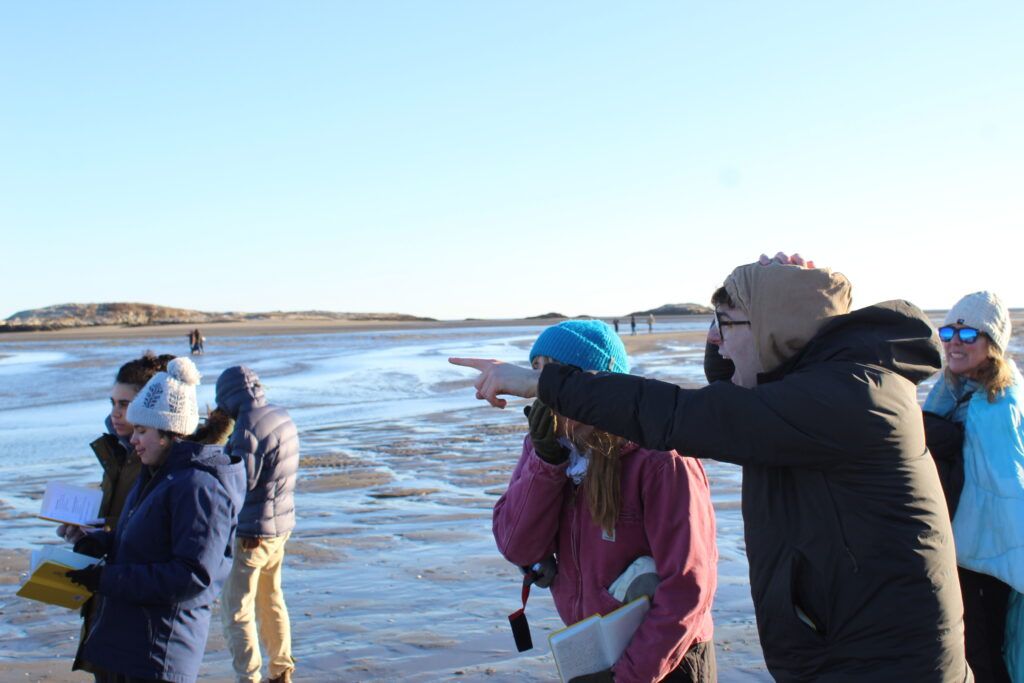In the wee hours of Tuesday morning, the 45 members of semester 61 embarked in six vans loaded with backpacks, canoes and kayaks. Their destination? The wilderness, of course! Every semester spends five days in the wild places of Maine, areas that have been largely untouched by human development. Coordinated by Johnson Whippie, Chewonki’s Outdoor Classroom Field Coordinator, the groups have been preparing for their trips for several weeks. Bear-hangs, wet exits, paddling strokes and t-rescues were among the skills students had to master before their trips. Luckily, Chewonki is chock full of talented outdoor educators that helped students get up to snuff.
According to Johnson, wilderness trips play a huge role in helping students develop their sense of self, one of our goals for graduates. Each day in the wild brings new challenges, and students must push themselves a little further, a few more steps or strokes. They need to figure out how to make themselves comfortable in the cold, how to hydrate and nourish themselves, and how to deal with the unexpected. Often students discover that they are capable of a lot more than they thought, especially in a supportive group of fellow students! And out in the wild, students are rewarded for their efforts with rare glimpses of Maine’s untouched habitats, once-in-a-lifetime views, lasting friendships, and a new understanding of their strengths, weaknesses and growing edges.

Bigelow North and South Trips – Backpacking The first two groups of students headed to the Bigelow Mountains, about 100 miles north of Chewonki Neck. Each group began at opposite ends of the preserve, one at the southern tip of Flagstaff Lake and the other at the bottom of Crocker Mountain, and each will hike about 40 miles of the Appalachian trail, trading vehicles at the end. The trail has excellent views of Flagstaff Lake and Mt. Katahdin, Maine’s highest (and most famous) point. Johnson said the groups will also have stellar sunrises and sunsets from Myron H. Avery Memorial Campsite, a high-elevation pit-stop with 7-8 tent pads arranged in a large circle. Avery has wide open views of the mountains and valleys to the south, and our groups will stay there on Wednesday and Thursday nights.
The first two groups of students headed to the Bigelow Mountains, about 100 miles north of Chewonki Neck. Each group began at opposite ends of the preserve, one at the southern tip of Flagstaff Lake and the other at the bottom of Crocker Mountain, and each will hike about 40 miles of the Appalachian trail, trading vehicles at the end. The trail has excellent views of Flagstaff Lake and Mt. Katahdin, Maine’s highest (and most famous) point. Johnson said the groups will also have stellar sunrises and sunsets from Myron H. Avery Memorial Campsite, a high-elevation pit-stop with 7-8 tent pads arranged in a large circle. Avery has wide open views of the mountains and valleys to the south, and our groups will stay there on Wednesday and Thursday nights.
Each of our backpackers will carry 30-50 pounds of gear, depending on how well they’ve packed. In addition to their personal items, each student will also carry a portion of the group gear, including food, cooking equipment, tarps etc. According to Johnson, the most challenging aspect of the trip will be finding water, however. Hikers will have to collect and purify water from streams, mountain springs and run-off using filtration systems. Our students have great guides to help them on their journey, though. The Bigelow north trip is being led by outdoor educator Conor Burke, history teacher Andrew Hunter, and semester fellow Drew Higgins. The Bigelow south trip is being led by semester fellow Holly Hunter, English teacher Sarah Rebick, and Spanish teacher Otis Wortley.
St. Croix River Trip – Canoeing
 Our third group headed straight downeast to Vanceboro, where they will paddle 30 miles of the St. Croix River in canoes. The St. Croix is located on the border of the United States and Canada, and these paddlers will have the unique experience of seeing Canada on river left, and the U.S. on river right for the duration of their trip. Trippers will sleep on river right, of course, since they didn’t bring passports.
Our third group headed straight downeast to Vanceboro, where they will paddle 30 miles of the St. Croix River in canoes. The St. Croix is located on the border of the United States and Canada, and these paddlers will have the unique experience of seeing Canada on river left, and the U.S. on river right for the duration of their trip. Trippers will sleep on river right, of course, since they didn’t bring passports.
Because of the recent rain, the St. Croix’s water level should be fairly high this week, which means more opportunities for rapids and quick water. After their skills sessions though, Johnson’s anticipates that this group will sail through without a problem.
According to Johnson, the St. Croix winds through a thick, deciduous forest, wrapping around countless small islands, bars and deposits in the river. The labyrinthine river is easy to follow, however, and paddlers will have the opportunity to observe wildlife and many different species of migrating birds, who follow the St. Croix like an avian highway. Paddlers will also run into Little Falls, a well-known section of class 2 rapids, which Johnson thinks will be a fun challenge for our students. The cool nights and warm days will also make for some beautiful river mist in the mornings.
This group is being led by experienced outdoor educator Hannah Marshall, science teacher Becca Abuza, and semester fellow Tina Glusac. Canoeists have it a bit easier than backpackers, since they can haul larger quantities of gear in their boats.
Penobscot West Branch River Trip – Canoeing

Our fourth group will head north, taking the Golden Road out of Millinocket to the West Branch of the Penobscot River. At one time the heart of North America’s forestry sector, this area is criss-crossed by packed-dirt logging roads and dotted with mills. Students will meet Don Lamson and Sarah Sindo, of Chewonki’s Big Eddy campground, who will shuttle them to the river. Their route will take them across both lakes and rivers, including some sections of class 1 and 2 rapids, and they may need to portage their boats to avoid shallows, rocky ledges and falls. These students will have stunning views, however, as they will travel under the shadow of Mt. Katahdin for their entire journey.
The Penobscot paddlers have the excellent Jen Adams, who is Chewonki’s wilderness trip coordinator, art teacher Sue West, and semester fellow Mikaela Dalton leading their trip.
Stonington Trip – Sea Kayaking

Our fifth group headed to Maine’s lobstering capitol, Stonington, Maine, which is located just north of Vinylhaven. They will spend five days island-hopping in one of our state’s most beautiful coastal destinations. Our kayakers are sure to see seals, porpoises and other marine life in the ecologically vibrant Deer Isle Thoroughfare, as well as migrating species of sea birds and other mammals. Students will have to carefully navigate the coastal waters, accounting for winds, tides and possible inclement weather. Good thing they have outdoor educator Amy Dorfman (who led Chewonki’s boat builders trip this summer), as well as team development coordinator Shelly Gibson and math teacher Katie Curtis, to guide them. Sea kayakers must bring lots of dry bags and carefully pack their gear to protect it from rain and splashing salt water.
Allagash River Trip – Canoeing

Our sixth group (last but not least), headed to the Allagash River. The most remote of the six trips, the Allagash waterway has been preserved by the state of Maine to protect its unique ecology from forestry and other commercial exploitation. Johnson says that this trip is the most likely to see a moose, as well as many species of migrating birds. The river has been low and recent rains promise to speed the water up a bit. Students will put in at Lake Umasakis, paddle to Round Pond, and see many beautiful and remote sections of the river. Johnson hopes it will be an excellent opportunity for students to use their new phenology skills to observe the ecological changes occurring as the summer season turns into autumn. These trippers are lucky to be led by outdoor educator Jamie Ptacek, Chewonki Vice President and seasoned trip leader Greg Shute, and math teacher Liz Burroughs.
All of our trippers are returning this Saturday, and we can’t wait to share images and stories from their trips!

